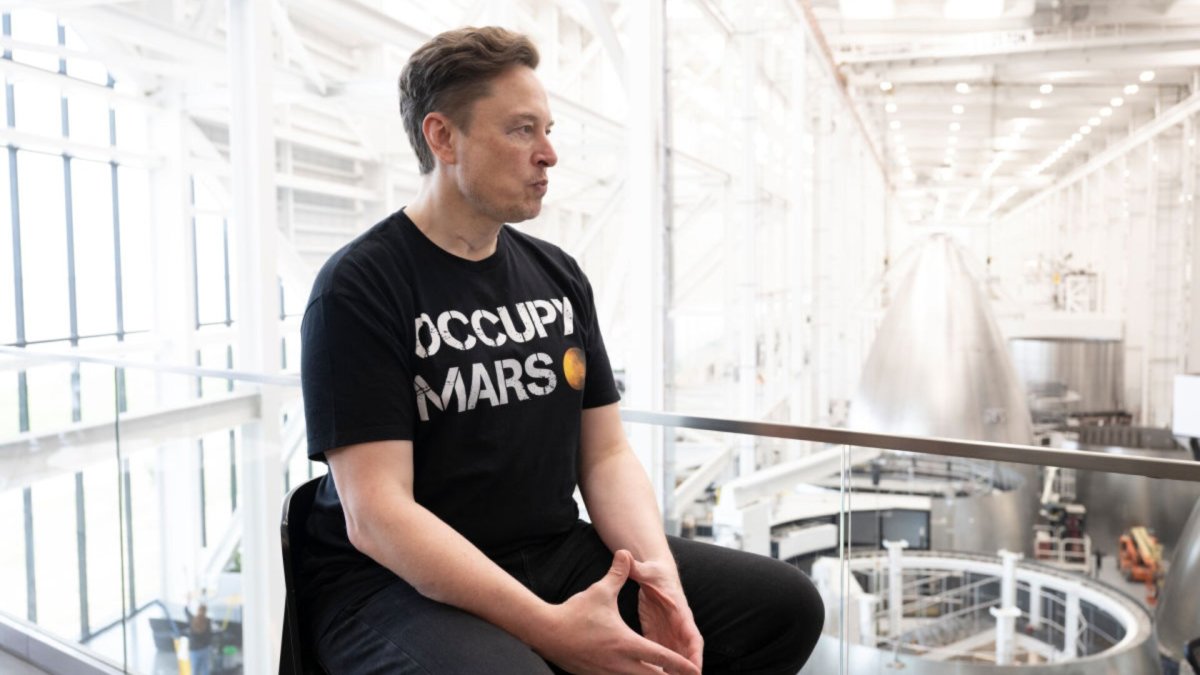Elon Musk scrapped Tesla Master Plan 3 because it was “too complex.”
Elon Musk is a polarizing figure.
Even before he purchased Twitter, now X, his foray into politics made him an even more cult figure; people thought of him either as a Tony Stark-esque genius or a complete charlatan.
Through his advocacy of green energy and EVs, Musk became a darling of liberal-leaning fans who agreed that climate change is an existential crisis.
Elon Musk is a polarizing figure.
Even before he purchased Twitter, now X, his foray into politics made him an even more cult figure; people thought of him either as a Tony Stark-esque genius or a complete charlatan.
Through his advocacy of green energy and EVs, Musk became a darling of liberal-leaning fans who agreed that climate change is an existential crisis.
But that advocacy also put him in the crosshairs of conservative-leaning Americans who believe climate change is a hoax.
The poles (and polling) on Elon Musk have shifted in recent years.
His support among liberals has eroded, while his profile among conservatives has skyrocketed.
Musk seemingly acknowledged this shift during the Qatar Economic Forum earlier this year when he said that the politically left-leaning Tesla buyers who abandoned the company have been replaced by people who align more with his politics.

Elon Musk has had a lot on his plate in 2025.
Image source: Joseph/The Washington Post via Getty Images
Tesla’s Master Plan timeline
Elon Musk’s “master plan” is part of his mythology.
Master Plan 1: 2006
Published in 2006, the plan outlines Musk’s vision for Tesla’s future, distilling it to four points:
Build a sports car.
Use that money to build an affordable car.
Use that money to build an even more affordable car.
While doing the above, also provide zero-emission electric power generation options.
Master Plan 2: 2016
Tesla had accomplished some of this list by the time “Master Plan, Part Deux” was published a decade later.
Create stunning solar roofs with seamlessly integrated battery storage.
Expand the electric vehicle product line to address all major segments.
Develop a self-driving capability that is 10X safer than manual via massive fleet learning.
Enable your car to make money for you when you aren’t using it.
The second phase of his 2016 plan was significantly more invested in solar as an alternative energy source than the first.
Perhaps not coincidentally, just weeks after the second plan was published, Tesla agreed to acquire SolarCity for $2 billion (Tesla was later sued by shareholders over the acquisition).
Master Plan 3: 2023
“Described how all of Earth could move to sustainable energy,” said Musk.
Musk says in 2025 that this Master Plan 3 was so clever in its intricacies that he had to scrap it.
“Master Plan 3 was too complex for almost anyone to understand,” Musk declared on his X account.
Master Plan 4: 2025.
Sustainable abundance through dancing robots
So he’s moved on to Master Plan Part 4, which, unlike its predecessors, has a video accompaniment.
The video uses the phrase “sustainable abundance” to describe the future Tesla is building.
“What is the happiest future you can imagine?” Musk asks at the end of the video. “Sustainable abundance for all.”
While the term “sustainable abundance” may initially seem nebulous, the World Economic Forum provides a detailed explanation of its meaning.
“The concept of ‘sustainable abundance’ challenges the traditional trade-offs between economic growth and environmental sustainability.
It emphasizes the necessity of meeting current needs without compromising future generations’ ability to meet theirs, a principle rooted in the 1987 United Nations Brundtland Commission report.
This approach requires significant innovation in reducing the environmental impacts of economic activities while making essential resources accessible and affordable for all.”
The text version of Master Plan Part 4 mentions sustainable abundance five times.
The Goal: “redefining the fundamental building blocks of labor, mobility, and energy at scale and for all.”
Expert claims Musk ‘bored of the car industry’
Analysts from Bloomberg discussed the Master Plan this week, pointing out that Musk’s social media activity had been mostly political before the release.
Musk had promised shareholders that he would devote his full attention back to Tesla once he left his job as the head of the Department of Government Efficiency.
However, he has used social media to talk about anything but Tesla.
Still, the biggest headline from the release was that 80% of Tesla’s value would be derived from its humanoid Optimus robots.
Despite Tesla’s sharp pivot to becoming a robot company instead of a car company, Bloomberg’s Dana Hull wasn’t impressed.
“What struck me is that this is recycling stuff that has been in their shareholder decks and impact reports,” Hull said.
“Fundamentally, I think that Tesla has a real marketing problem, where you have a CEO who is clearly bored of the car industry, wanting to continue to ride this AI hype wave and convince shareholders that the future is all about robotics and AI.
But they keep falling short of being able to do that in a cogent way.
“And why drop this on Labor Day?
The proxy is going to come out soon, but from a timing perspective and a marketing perspective and a strategic communications perspective, it’s the mess that Tesla has always been.”
Takeaways:
Master Plan One: Created a sports car that enabled it to build more affordable alternatives
Master Plan Two: Established solar as a reliable energy source, and launched full self-driving, enabling robotaxis.
Master Plan Three: Scrapped for complexity.
Master Plan Four: Sustainable abundance enabled by AI-powered robots.
Leave a Reply